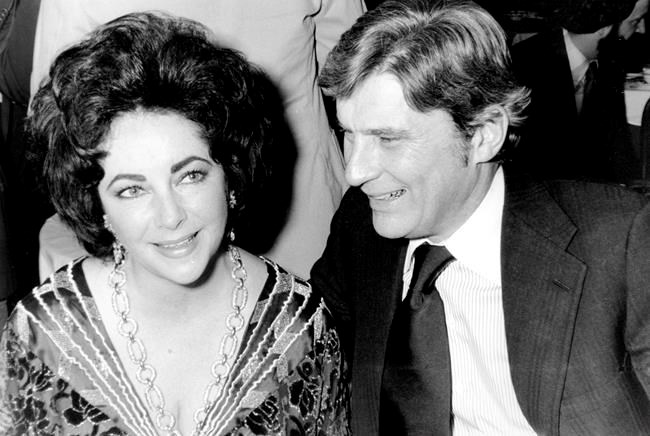John Warner served for 30 years in the U.S. Senate, much of it as chairman of the powerful Armed Services Committee, and as a centrist Republican he established himself at the center of American politics.
But before all that, Warner, who died Tuesday at 94, became famous as the sixth man to walk down the aisle with violet-eyed movie star Elizabeth Taylor.
The two met on a blind date in 1976 when the British ambassador asked Warner to escort Taylor to an embassy party honoring another Elizabeth, the Queen of England, who was visiting Washington. They married that December on Warner's farm near Middleburg, Virginia.
“Well, I thought we would get married, live on the farm, raise horses,” Taylor told Larry King on his show in 2001. ”... And I thought it would be all very sort of farmish, and jobby, horsey, and I could have animals, and I would go out and brand the cattle.”
But soon after they wed, Warner set his sights on an open U.S. Senate seat. And Taylor, a former Democrat, campaigned with her new husband, drawing huge crowds.
“It’s no question being married to Elizabeth Taylor increased interest in him,” said Donald W. Huffman, who once led the state Republican Party. “She traveled with him, and people turned out.”
Years later, Taylor laughed at how she was told not to dress ostentatiously during the campaign.
“I ended up in a tweed suit,” she told Harper’s Bazaar in 2006. “Me. Little tweed suits. What I won’t do for love.”
When Warner got to the Senate in 1979, he was the butt of some jokes, including being immortalized as “Sen. Elizabeth Taylor” in the “Doonesbury” comic strip. And once he established himself as a senator, Taylor rarely got involved.
“I don’t think I’ve ever been so alone in my life as when I was Mrs. Senator, and I don’t blame my ex-husband,” Taylor wrote in her 1987 book “Elizabeth Takes Off.” “He never pretended to be anything but a man devoted to public service, and once that service began in earnest, I had to take a backseat to his constituency.”
Unfamiliar in a supporting role, she said she felt worthless, eating and drinking with abandon. Her usual 120-pound figure ballooned to more than 180 pounds. But Taylor also credited Warner with helping her get on track with her weight loss -- making her hoist an 11 pound turkey to see how heavy it felt. The observation struck home, she said.
The two grew apart, though, and, after a 14-month separation, divorced in 1982.
“I never took it as a personal rejection on John’s part, certainly not on a conscious level,” Taylor wrote in her book. “John wasn’t doing anything more or less than what any other senator did. I just couldn’t bear the intense loneliness, the lack of sharing with the person with whom I most wanted to share.”
Warner, for his part, also blamed his work.
“Elizabeth is one who loved to fully share life with her person,” Warner told The Washington Post in 1984. “You get into the Senate and lose control of the hours and the regularity, and you get tremendously involved in the pressures of that office. She opted for her own career and all of a sudden the fork in the road came.”
A year after the divorce, Taylor entered the Betty Ford Center for treatment for drug and alcohol dependency.
Both eventually remarried, and they claimed long after their divorce that they were better friends as exes than as Mr. and Mrs. She later enlisted his help in getting more funds for AIDS research, a cause she took up after her friend Rock Hudson died of complications from the disease.
“He knows he wasn’t the love of my life. And I know I wasn’t the love of his life,” Taylor told The New York Times in 2002. “But we loved each other. We got along wonderfully until he decided to be a politician. And then he married the Senate.”
Warner’s former celebrity lifestyle became an issue in his 1996 campaign. His opponent, James Miller, portrayed him as an arrogant socialite. “John Warner likes to run around in the fast lane with movie and media stars,” Miller criticized.
But Warner, who after his divorce had dated Barbara Walters, answered only, “I haven’t been in Hollywood in 20 years.”
___
Former AP staffer Dena Potter was the principal writer of this story.
The Associated Press



